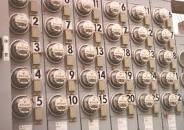IoTaWatt is does not meet the requirements for a revenue meter, nor is it intended to be used for billing purposes. The reasons are not related to its accuracy.
While IoTaWatt can use any 50mA or less output CT, and directly has parameters for dozens of CTs produced by various vendors, the CTs available from the official store are 0.5% CTs from AccuEnergy and can be used with actual revenue devices requiring that level of accuracy.
The IoTaWatt base unit itself however does not qualify for a number of reasons, including these:
Revenue meters, in many jurisdictions, require that the meter provide an externally visible display that can be monitored by the customer.
Revenue meters, in many jurisdictions, require that they be tamper proof both physically and electronically. IoTaWatt is not.
Revenue meters must be certified as to accuracy by an independent authority. That is an expensive upfront cost, and an expensive ongoing cost involving factory inspections, regular inspections, calibration and calibration of the calibrating equipment. That’s not practical unless you are producing tens of thousands of units.
All that said, probably the most significant reason is that IoTaWatt does not meter continuously. It samples each circuit a couple of time per second and extrapolates those samples for total energy usage. I don’t believe the sampling method would pass muster in technical review for a revenue meter.
Statistically, the sampling method produces acceptable results for monitoring energy use, and the benefit is that one fairly simple sampling unit can multiplex to monitor many circuits, as IoTaWatt does. I’m not aware of a revenue meter that will monitor a dozen or more circuits. This is more typical:

To sum up, revenue is billing, and requirements are regulated by the state or local authority. Monitoring energy use for purposes of identifying usage trends, cost to operate, duty cycles load balance, PV or wind contribution, time-of-use, battery capacity and usage, generator requirements etc. etc. do not require compliance with local revenue requirements, only reasonable accuracy to provide reliable information.
